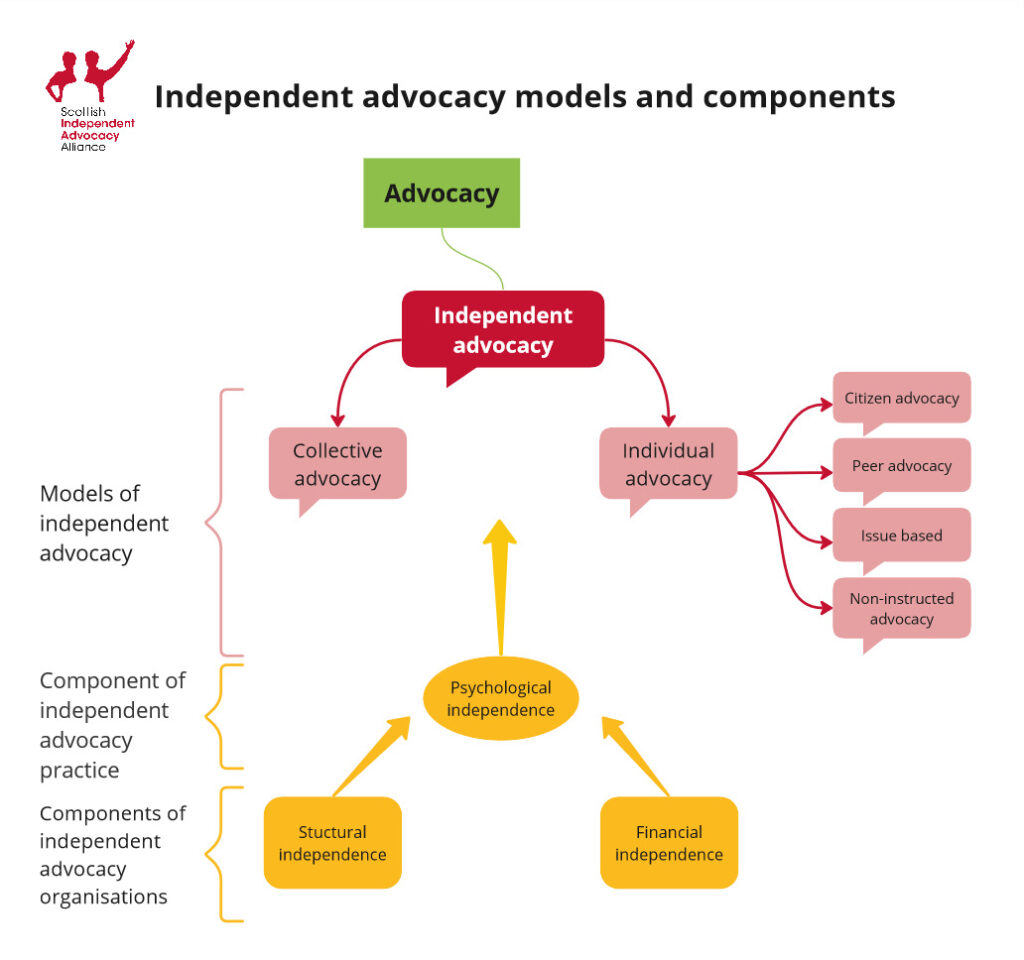SIAA has published a new Briefing on the Legal Definition and Components of Independent Advocacy. SIAA are clear that in order for independent advocacy to work well and be resourced effectively it needs to be clearly defined in law and policy. For example, the Mental Health (Care and Treatment) (Scotland) Act 2003 has the most robust definition of independent advocacy in Scottish legislation to date. SIAA believe expanding access to quality, grassroots independent advocacy for all those who need it can be achieved, in part, through strengthening the definition of independent advocacy in upcoming law and policy. A clear definition shapes the types of procurement and contracts that are created to provide independent advocacy, independent advocacy organisations themselves, independent advocacy practice and, most importantly, shapes the experience of advocacy partners and groups accessing independent advocacy to address injustices and human rights issues. The definition in the 2003 Mental Health Act is a starting point but can be improved upon.
This Briefing brings together our work in this area to present a legal definition that aligns with the definition of indepenendent advocacy co-created with SIAA member organisations produced for the Independent Advocacy Principles, Standards and Code of Best Practice. The definition therefore draws directly from the experitse and experience of independent advocacy organisations and groups that have been delivering independent advocacy across Scotland for over 30 years.
This definition comprises of ‘structural, financial and psychological independence’ being the key components of independent advocacy. Structural and financial independence are fundamental to establishing and maintaining the independence of the organisation providing independent advocacy. Psychological independence is part of the practice of independent advocacy, enabling trust to be built with advocacy partners, as well as speaking to the quality of independent advocacy provision. Additionally, psychological independence influences the organisational culture and values necessary for independent advocacy organisations. SIAA propose that two of the three components of independent advocacy are outlined in upcoming primary legislation e.g. in Bills and Acts of the Scottish Parliament. The third component of independent advocacy is difficult to define in law and therefore SIAA propose that psychological independence is included and expanded upon in regulations or standards that support the law and guidance documents that provide more detail on implementation.
Primary Legislation
Primary legislation
“Independent advocacy organisations or groups providing support and representation must have structural and financial independence from other organisations and services. An organisation providing independent advocacy must have structural and financial independence.
- Structural independence means an independent advocacy organisation or group is a separate organisation in its own right. For example, it is registered as a charity or company and has its own Management Committee of Board of Directors. An independent advocacy organisation only provides independent advocacy. The organisation must provide no other services, have no other interests, ties or links other than the delivery, promotion and support of independent advocacy.
- Financial independence means an independent advocacy organisation or group has its own source of funding that does not cause any conflict of interest and does not compromise the work it does.”
Guidance and Secondary legislation e.g. Regulations
In order to practice effective independent advocacy, an independent advocacy organisation or group must be structurally, financially and psychologically independent. Structural and financial
independence are outlined in the Act.
The independent advocacy organisation or group should provide no other services, have no other interests, ties or links other than the delivery, promotion, support and defence of independent advocacy. Structural and financial independence support psychological independence. Independent advocates must have psychological independence through acting in the absence of undue influence and minimising conflict of interests. Psychological independence is fundamental to the practice of independent advocacy, meaning the primary loyalty and accountability of an independent advocate is to the advocacy partner and enables the independent advocate to better support a person to express their views. Psychological independence builds trust with an advocacy partner or group and shapes the nature of the advocacy being provided.
The below diagram helps to illustrate how the key components that enable advocacy to be independent work together as well as highlights the models of independent advocacy.


